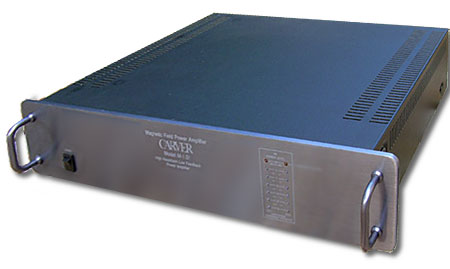Apologies if you have already addressed this, as I must have missed it, but did you have a clear preference for one over the other?
I am of the school of thought that any answer is the correct one if you prefer it, though you have to be careful as sometimes the change initially seems preferable only to eventually be determined to be a step backward. All purely subjective to be sure.
I'm still going back and forth between them. Sometimes I use the settings where they are volume matched (per the blind test) but most of the time I'm just switching between the two preamps. I really do love the clarity and lack of any grunge to the Benchmark preamp, and the added sense of precision. And also the way the recorded acoustic and reverbs seem just that bit more prominent/discernible. We audiophiles (even "objectivists") make mountains out of molehills because that's the nature of being a hobbyist or enthusiast. But some of the differences that are subtle have sort of larger subjective effects. For instance, a while back I was listening to one older jazz track (and now I'm forgetting which one) which is spare instrumentation, sax on the right, another instrument on the left which is silent while the sax on the right solos (I may even be thinking of Kinda Blue...I can't remember because I played a lot of stuff like that). When the sax in the right speaker plays it's in it's own alcove of reverb, but you can also hear it's reverb showing up in the back Left corner of the soundstage, behind the left speaker too. I don't know if this was added to give a subtle stereo effect, but I suspect it was likely some bleed through with the other instrument mics picking up that sax, so it's like the sax has an "echo" showing up in the back of the opposite channel.
So on the CJ preamp, the sax sounds a bit more vivid and prominent, a bit less "stuck in the speaker" and also a bit more acoustically dense and round, a bit thicker, more body. And I can hear the very particular reverb around the sax, and also the particular reverb trail happening in the other speaker.
On the Benchmark, the sax looses a little of the vividness/prominence/density, but being slightly cleaner gains a bit more timbral subtlety and complexity. But what really gets me is what happens with the reverbs. There's the reverb around the sax itself, the "bleed through" reverb all the way at the other back right side of the soundstage, but also now there is a *very* subtle reverb of the sax I can hear occurring through the center of the soundstage (added later? Picked up by the center-placed mic for another instrument?). The effect is that where the two different sax reverbs sounded separated and distinct, it's like the acoustic opens up, the sax is now lighting up an acoustic that goes all the way from that sax to that other alcove of reverb, and now I have a greater sense of peering in to a larger acoustic, more like a different acoustic has appeared between the speakers.
When I switch back to the CJ (which I can do with the press of a button from the sofa), if I listen closely I can just barely hear that super low level swath of reverb in the center of the soundstage, but I have to strain more to hear it. With the Benchmark it's revealed just enough more to make it effortless to hear and the sensation is the sax now playing in a larger acoustic space, a studio, rather than just being steered to the right channel and some reverb showing up in the left channel.
The difference is so subtle that I would expect most "normies" to shrug over it, even if they heard it. But, hey, these kind of things are what make the hobby intriguing to me and I find subtle differences can have a large subjective impact for my listening experience.
All that said, if forced to pick one preamp over the other I would probably still pick the CJ preamp, because I just love the vividness and density, something I really seek in reproduced sound. But over time I may find I will choose the Benchmark. Not sure yet.


